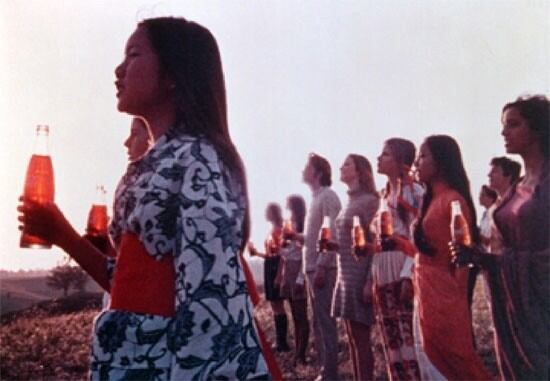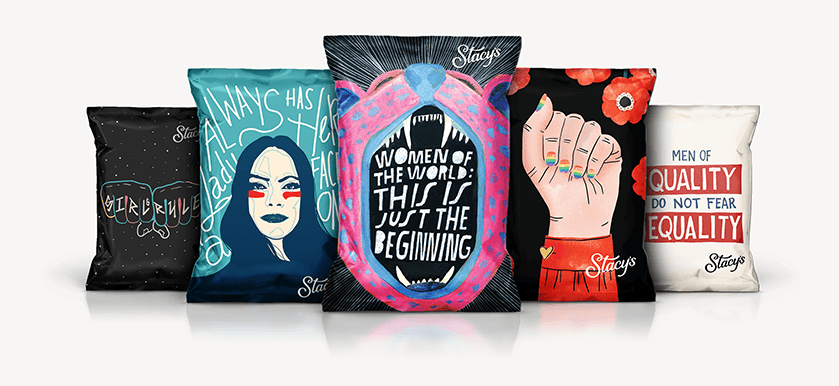Online backlash from the ad ranged from parody memes in social media to social and cultural critical pieces, in which the general consensus was that Pepsi’s ad appropriates and trivializes reasons for social justice movements.
In the ad, Kendall Jenner strikes various poses for a high-fashion photoshoot while a (cheerful) protest demanding peace and love (one can infer from the posters) culminates around her.
Jenner then abandons her photoshoot to join the protest, grabs a can of Pepsi, and offers it to one of the policemen barricading the protesters. When the policeman pops the can open and takes a sip, the crowd cheers.
Black Lives Matter symbolism to sell a can of soda
At the ad's climax, a popular screengrab that circulated online, was when Jenner hands the Pepsi to the officer, which many observers have likened to the famous photo of Ieshia Evans, a black woman who stood her ground in a summer dress as riot police charged toward her during an anti-police brutality protest in Louisiana last July.
“As activists are dedicating their lives towards creating positive change in our culture, it’s insensitive to try and turn this movement into a sales pitch for a soft drink,” Ken Wisnefski, founder and CEO of digital marketing agency WebiMax, told FoodNavigator-USA.
“The Black Lives Matter movement symbolizes a struggle for equal rights in the African-American community. This issue is extremely sensitive within the police community as well,” he added. “In the big picture, there are very real issues that persist and trivializing these issues into something that can be solved with soft drink is disrespectful.”
Using societal angst in ads

Pepsi still defended the ad on Tuesday afternoon prior to pulling the ad, releasing a statement that read "this is a global ad that reflects people from different walks of life coming together in a spirit of harmony, and we think that's an important message to convey.”
Using the ideas of peace and unity is not foreign in the world of soda advertising. As Esquire journalist Kaitlin Menza wrote, “it’s not the first time a marketing team has used societal angst to sell sugar water,” but as she wrote in her headline, “Coca-Cola did it better.” PepsiCo’s main rival was behind the iconic “Buy the World a Coke” commercial from 1971, but received mixed reviews decades later for its Super Bowl ad in 2014 (used again in 2015) depicting Americans of diverse cultural backgrounds as the song ‘America the Beautiful’ plays in the background, with each line sung in a different language.
Stacy’s Pita Chips tackles the protest narrative from a different angle
Pepsi wasn’t the only PepsiCo brand that used a protest as context for its campaign in these past few weeks. There was a much more discreet, if not graceful, use of the current political angst in Stacy’s Pita Chips recent ‘Stacy’s Stands with You’ campaign.
In honor of Women’s History Month, the company released limited edition packages inspired by Women’s March protest posters. They were handed out to people rallying on International Women’s Day, where a Snapchat code on pack let people call their local representative right then and there.
Bags were also sold online, and with every bag ordered, Stacy’s pledged $10 to the women’s organization ‘Step Up.’ After bags sold out and raised $80,000 that day, the company started a competition for consumers to send their own bag designs. The three winners will have their bag of chips sold online (2,000 bags available) to raise money for the same cause.

Is there a ‘right’ way to incorporate political zeitgeist in advertising?
Compared to Pepsi’s ad, Stacy’s campaign didn’t cause much of a ripple, let alone a wave. “The rather quiet, almost stealth way this campaign was executed was not at all risky for the brand,” Lori Colman, founder and co-CEO of Chicago-based CBD Marketing, told FoodNavigator-USA. “They went directly to women’s rallies with their initial packages—hyper targeted and really speaking to the choir.”
Without the megaphone and with the mega-targeted audience, Colman added that the campaign allowed consumers to assess whether corporate values mirror the message they’re pitching (or appropriating) in a brand’s politically-charged campaign.
“There has been a nauseating amount of ‘greenwashing,’ ‘farmwashing,’ and adding a ‘health halo’ to products that are quite the opposite,” she said. “Stacy’s was founded by a woman, so there is credibility for this campaign. And fortunately owners PepsiCo/Frito Lay seem to have a decent record of striving for equality and promoting women in leadership roles.”
What Pepsi could’ve done differently
“Which makes the Pepsi/Jenner ad mess so bizarre,” Colman continued. “From the contrived happy hippy protest march to the final scene which is derivative of a serious situation, this ad is just one of the worst ever. Did they test this ad? With whom? Then, unlike the discreet Stacy’s campaign, this went straight to the big time.”
According to Wisnefski, Pepsi pulling the ad was just too little, too late. “They already showed a severe lack in judgment by allowing this ad to be created in the first place. To initially stand behind the advertisement is frankly crazy,” he said. “Ultimately, they made the proper decision in taking the advertisement down, but their actions moving forward will have to speak volumes.”
For marketers, Wisnefski pointed out that a takeaway from Stacy’s campaign (that Pepsi missed) was that “Stacy’s Pita Chips didn’t portray the issue being solved with a chip,” Wisnefski said, and adding that the campaign had a fundraising component to it for a cause aligned to the message.
But for Colman, Stacy’s could’ve done more. “It is great that they donated $100,000 to Step Up, but had they simply taken the dollar amount spent in production of this campaign and fulfilment/shipping of the bags, Step Up would have received a LOT more money,” she said. “Their press release claims that Stacy’s will be a brand that continues to stand with women, so I look forward to whatever comes next.”
